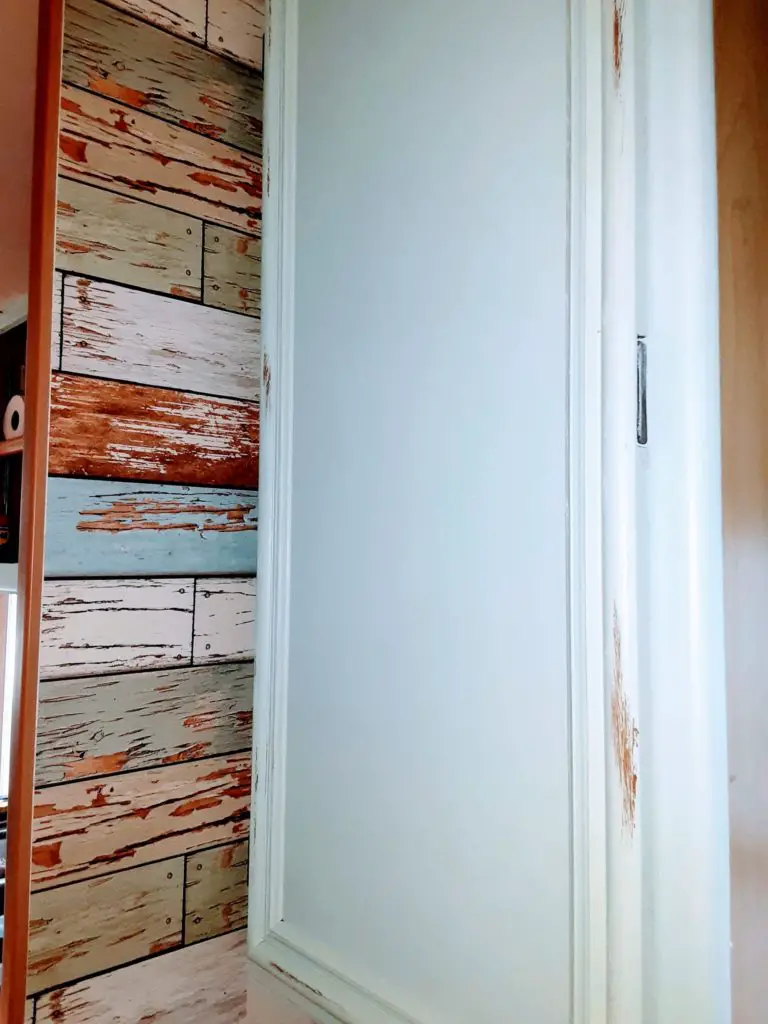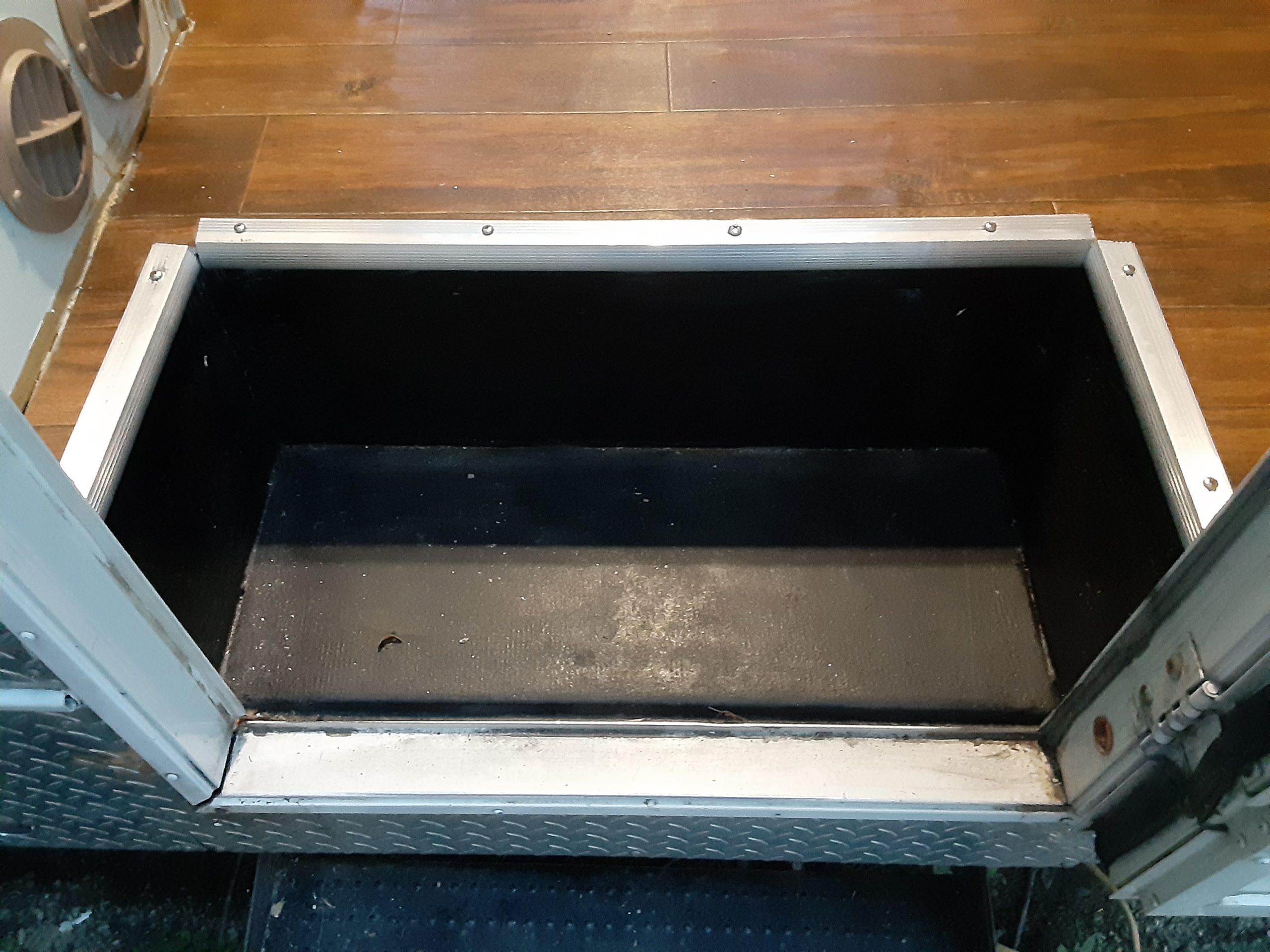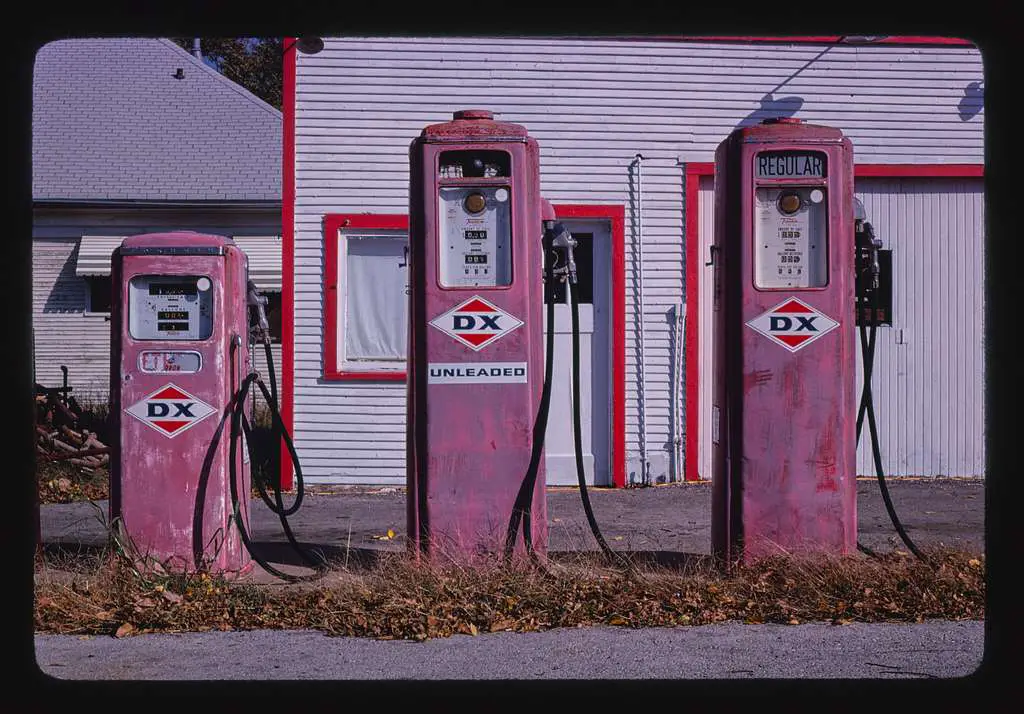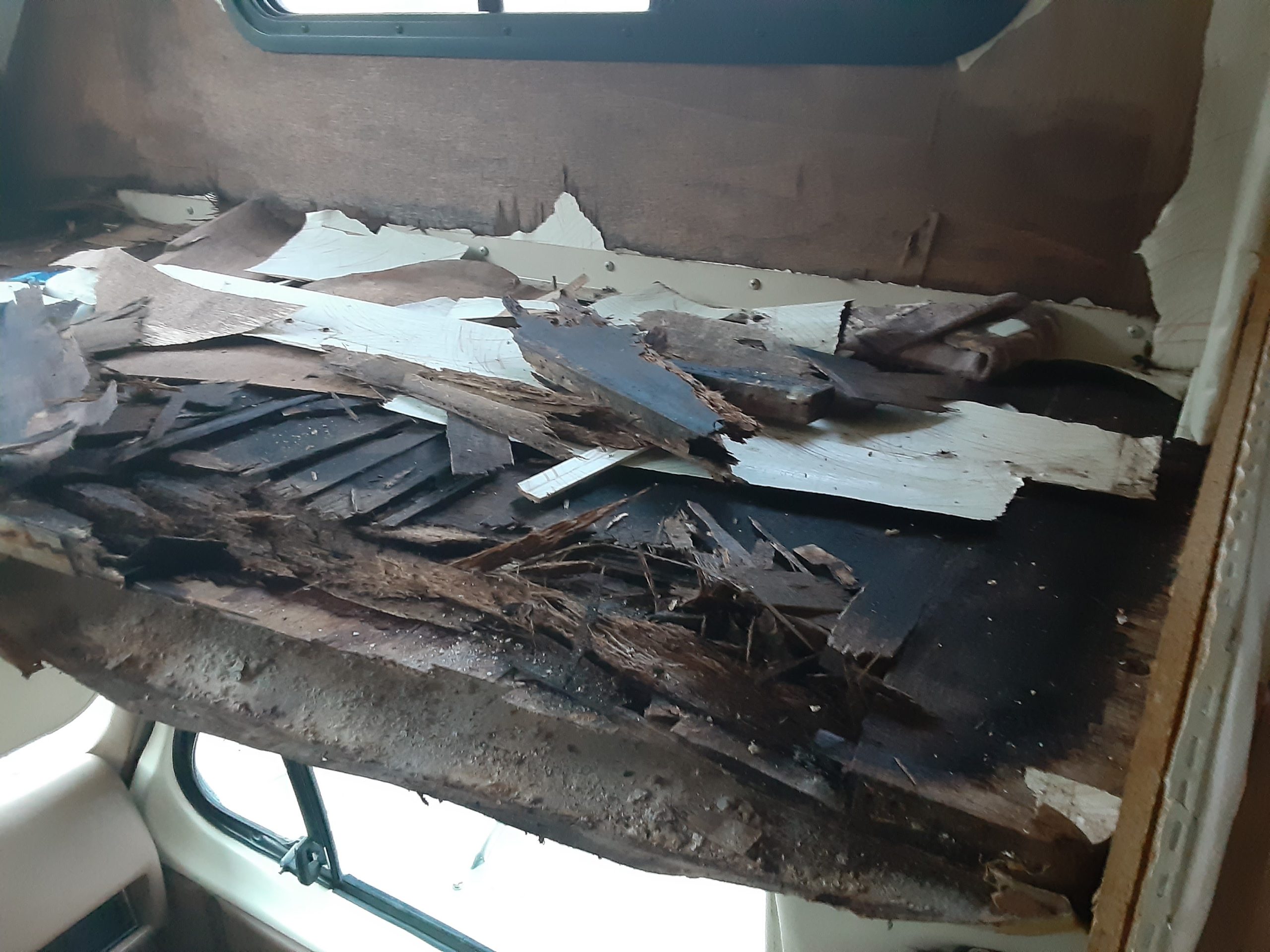The interior walls of an RV coming from the manufacturer are just usually not pretty. Most of us just deal with it not wanting to bring the value down on the new investment we just made. When it comes to RV Interior Paint Ideas, certain steps need to be taken to achieve the best final product possible.
For an older RV or one that is getting a much-need update, it is game on, and painting the walls is most likely on the top of the list.
Can I paint the walls in my RV?
Yes, RV interior walls can be painted if the proper prep work is done and a quality paint product is used. To assure a great finished look that will last for years, you will need to take your time and use a little elbow grease. To make sure the paint adheres to the surface you will need to complete a few time-consuming, but simple steps.
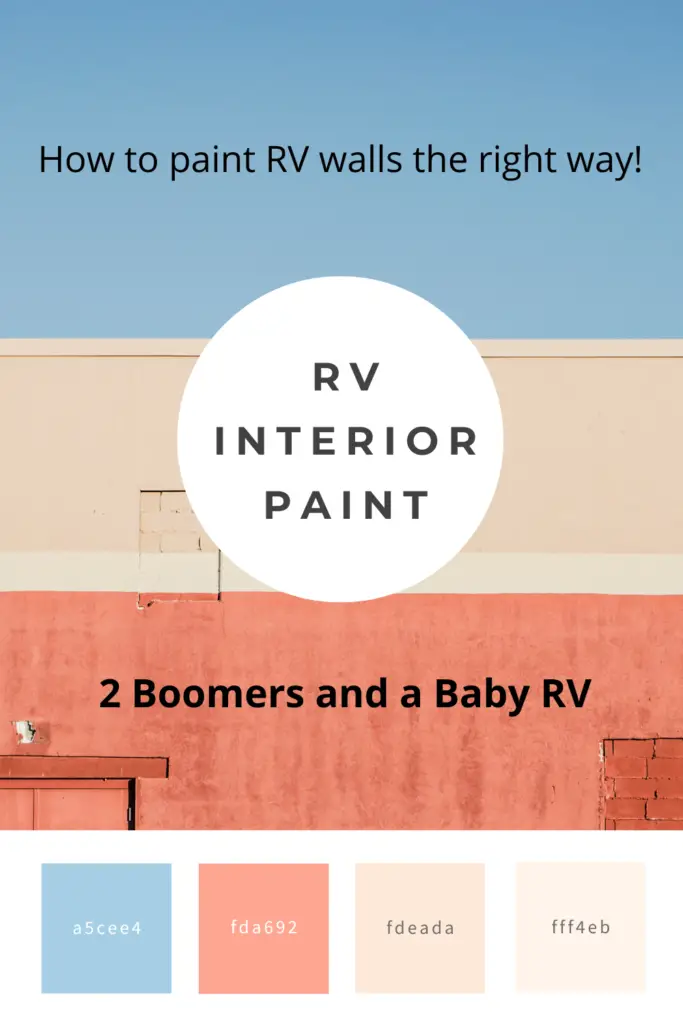
Supplies you need
Standard Tools – Screwdrivers, Pliers, and Hammers depending on your RV and how far you are breaking down your RV before painting.
Sander – Either auto sander to hand sander
Sandpaper – 150 – 240 Grit
Filler – Either a Wood Filler or Flexible Plaster
Razor Blade or Exacto Knife
Surface Cleaner – TSP cleaner
Paint supplies – brushes/rollers, drop cloth, paint pan, liners, and painters tape like FROG TAPE
Caulk
Primer and Paint
Before you Begin
We suggest before you start to remove blinds and valances from the wall as they will be difficult to navigate around. Takedown decorative wall hangings and other removable items that may be too much to tape off.
This is a good time to decide if you will be replacing window coverings or using the original. If you are updating, will you be using the same screw holes, or needing new ones? You will want to patch any unused screw holes during the wall-prepping process.
- Don’t try and remove manufactured wallpaper as it will do more damage than good. Most RV walls are a somewhat think piece of wood with an even thinner layer of wallpaper glued to it,
Steps to the perfect RV interior wall paint job
Light Sanding
When sanding, you are not removing layers, but just want to mildly rough up the surface to make it more porous. Original wallpaper should remain intact as it adds support to the thin layer of wood we call walls in our RV.
During this process, I also like to use the backside of a screwdriver to light tap on raised areas around screw holes to prepare them to be filled. A razor blade can be used to clean up any burrs you may find around openings or edges.
Sanding can be done with a power sander like the BLACK+DECKER MOUSE 1.2 Amp Electric Detail Sander or a simple Warner Sanding Block Hand Sander. This really depends on how big the job is and how much elbow grease you have available.
Surface Cleaner
TSP (Trisodium Phosphate) seems to provide the best results at removing grease and other buildups that have made your walls home. This cleaner will help to assure your walls are ready for the primer to adhere to. A couple of options we like are Klean-Strip GIDDS-881056 Jasco TSP No-Rinse Substitute Cleaner or Sunnyside 64216 TSP Tri-Sodium Phosphate All-Purpose Cleaner
A clean surface is one of the most important steps as it will be the foundation for everything that comes afterward.
Prep for Painting
Wood Filler
Fill and screw or nail holes that will no longer be used with some DAP Wood fillers. I have used the Elmer’s E855 Carpenter’s Wood Filler in the past, mainly because it comes in a tube to easily apply and it is paintable. Once the wood filler cures completely, you can come back with another light sanding in just those areas.
Caulking
For any small gaps along the walls and ceiling, use a paintable with a flexible attribute. Your RV expands and contracts due to temperature fluctuations and your caulk should be able to move with it. My caulk of choice is Sashco Big Stretch Acrylic Latex High-Performance Caulking. This caulk is very elastic, and waterproof, has powerful adhesion qualities, and painting it is a breeze.
Final Cleaning
Once holes are filled and sanded, you will want to do a final cleaning with either Klean-Strip GIDDS-881056 Jasco TSP No-Rinse Substitute Cleaner or Sunnyside 64216 TSP Tri-Sodium Phosphate All-Purpose Cleaner before the painting begins.
Frogtape
The last step before painting is taping around whatever you are not painting. This can be the most time-consuming and tedious part, but it can also make or break a good-looking project. At least for me, I nit-pick everything that I work on from rehabs to my artwork.
Bonding Primer
A good primer is an essential step in making sure the paint adheres properly to the wall. Don’t skip past this step! You may think the paint job looks great, but trust me it will not stand the test of time from everyday use and temperature fluctuations.
A quality primer can be a little pricy, but as stated earlier it is crucial for the longevity of your project. Especially the way an RV fluctuates in temperature from season to season. Our suggestion is UMA Acrylic Bonder and Primer/Sealer or KILZ Adhesion Primer
Latex Paint
When it comes to RV interior wall paint, choosing quality paint will make the finished product that much more finished-looking. There are quite a few products on the market you can pick up at the local hardware or paint store. Like most things in life, you get what you pay for and paint is no different.
A paint sprayer can also be used for larger projects such as a complete gut and paint job RV rebuild. For most this will be too much with the tight spaces you get from an RV interior.
Bonus Tips
Floetrol paint additive to improve paint flow and reduce brush strokes and roller marks. I have found several uses for this besides painting my RV walls. If you like crafts and especially painting crafts it can create some awesome effects.
Here are the cabinets we painted and roughed up a little to match the wallpaper we added in one room.
